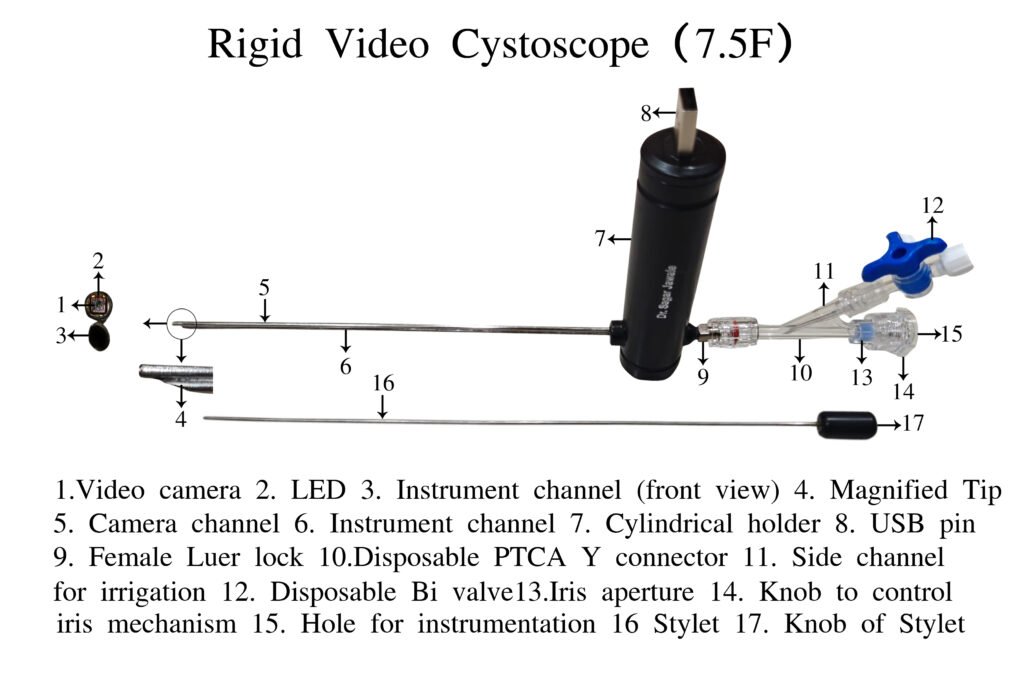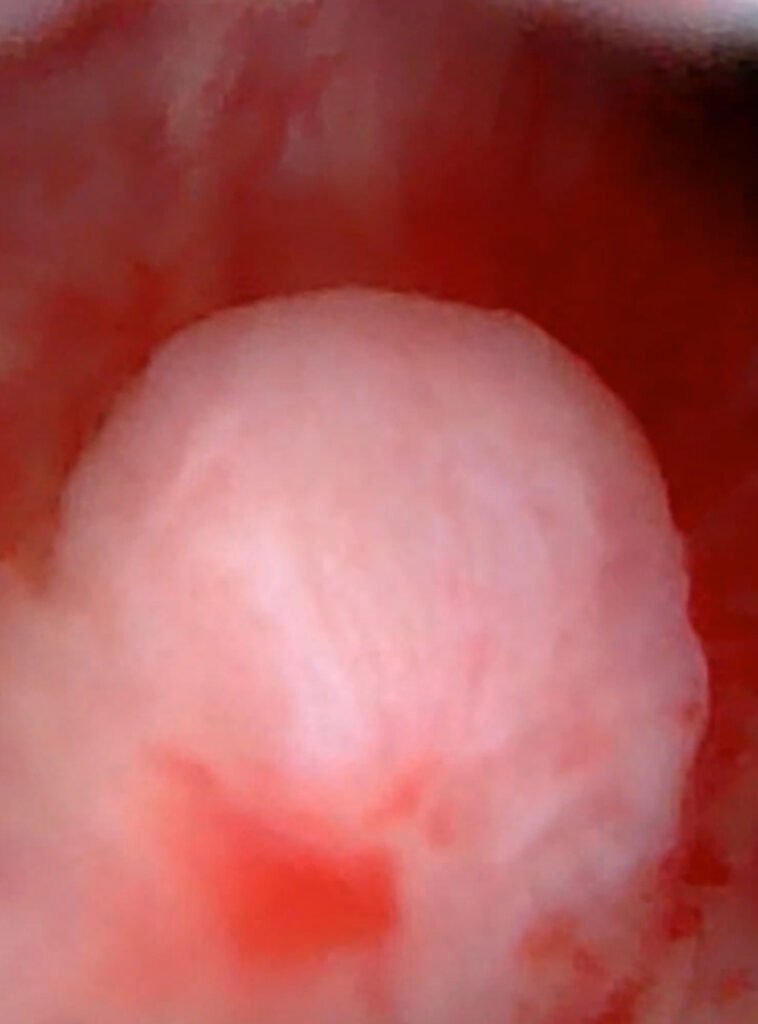It has 18-20 cm working length, 7.5 F diameter with 4.5 F instrument channel with a posterior disposable bridge which can be replaced easily. Cost Rs.75,000. It is also available in 10 F and 22 F sizes
In today’s era of urology, the need for precision, reliability, and optical quality has never been greater. Diagnostic and interventional therapies are founded on equipment that not only provides its performance on a consistent basis but also presents real-time feedback, enhanced imagery, and first-class control. It is here that the Rigid Cystoscope excels as an essential tool for any urologist and health care provider wishing to provide world-class care.

What is a Rigid Cystoscope?
A rigid cystoscope is one of medical instruments applied for visual inspection of the urethra and bladder. While flexible cystoscopes are constructed from plastic or another material, the latter is constructed of stainless steel, leading to a stiff, rigid body that offers more stability and accuracy with interventions.
The design comes with a high-definition video camera and bright LED lights constructed on the tip of the scope, allowing real-time visualization of intraurological anatomy. Images and videos taken are immediately displayed onto an external screen, providing doctors with a clear and enlarged picture of the urethra and bladder when examining or undergoing treatment.
Please watch the video for picture quality
Please see the phenomenal picture quality as photos below


Revolutionizing Visual Experience with High-Definition Video Imaging Realism
Clearness is quite important when diagnosing disorders of the urology. The rigid cystoscope features a technologically advanced digital camera chip on the telescope’s end. A chip such as this provides one with high-definition images and video in real time, meaning a more precise and better-educated examination.
The camera always feeds these images to a connected monitor, giving clear, magnified views of the lining of the bladder, diseased tissue, and potential lesions. This capability is helpful particularly in biopsies or stone extraction when visual clarity makes a huge impact on success.
Why to Choose Rigid Cystoscope?
- Integrated LED Illumination – The rigid cystoscope uses energy-efficient, high-brightness LED lights with improved illumination in the bladder. This provides clear visibility even of the smallest structures or abnormalities, making it easier for accurate diagnosis and treatment. LED lights have a longer life and less heat emission than traditional light sources, and are thus safer and cheaper for repeated use in a clinical environment.
- Stainless-Steel Construction – Constructed from high-quality stainless steel, the heavy-duty rigid cystoscope will withstand pressure with the demands of constant use in high-volume health facilities. Its rigid build offers increased control and is also ideal for those procedures demanding meticulous negotiation of the urethra.This instrument is autoclavable, and as a result, it could be sterilized and reused without compromising its structural integrity. In the long term, this negates the need for disposable scopes and significantly reduces equipment costs.
- Efficient Working Channels – One of the best aspects of the rigid cystoscope is the incorporation of working channels. These permit the infusion of fluids (sterile saline, for instance) into the bladder when conducting procedures, which enhances clarity and makes possible a better exam.The working channels also accommodate room for the passage of tiny instruments like biopsy forceps, graspers, or stone extraction instruments, thus allowing for therapeutic and diagnostic interventions on an outpatient basis.
- Ergonomic and User-Friendly Design – There are numerous procedures done by medical personnel within a day, and so usability and ease of the instrument are very important. The stiff video cystoscope has been specially designed with an ergonomic handle and proper weight distribution to facilitate easy manipulation and reduce hand tiredness during lengthy procedures. The user-friendly design allows easy assembly and disassembly of components to make cleaning, sterilization, and maintenance easier.
Components of the Rigid Cystoscope
The device consists of four principal parts:
- Telescope – Contains the optics and camera chip that record images.
- Camera – Converts light signal to digital high-definition output.
- Bridge – Provides a passage between sheath and telescope to facilitate instrument entry and fluid flow.
- Sheath – Is an outer protective cover and protects the patient from infection.
Every component functions in tandem to provide a seamless and effective experience for the patient as much as for the physician.
How Rigid Video Cystoscope Operates
The process starts with giving local or spinal anesthesia to relax the patient. A gel is applied on the urethra to numb it. The rigid cystoscope is slowly inserted through the urethra and into the bladder. Sterile saline solution is rinsed through the working channel to fill the bladder, providing a clear and distended field of vision. LED lights and high-definition camera then project real-time images on the monitor to assist the physician during the procedure.
Tissue specimens, if required, are obtained through the work channels, and after completion of the procedure, the instrument is withdrawn slowly. Antibiotics may be administered to avoid any infection after the procedure.
Who Should Use a Rigid Video Cystoscope?
Rigid video cystoscope is ideally suited for:
- Hospitals and surgery centers
- Private urology practices
- Outpatient diagnostic laboratories
- Medical schools and training institutions
Whether you’re performing routine cystoscopies, bladder biopsies, or diagnostic evaluations, this tool is an essential part of any urology department.


